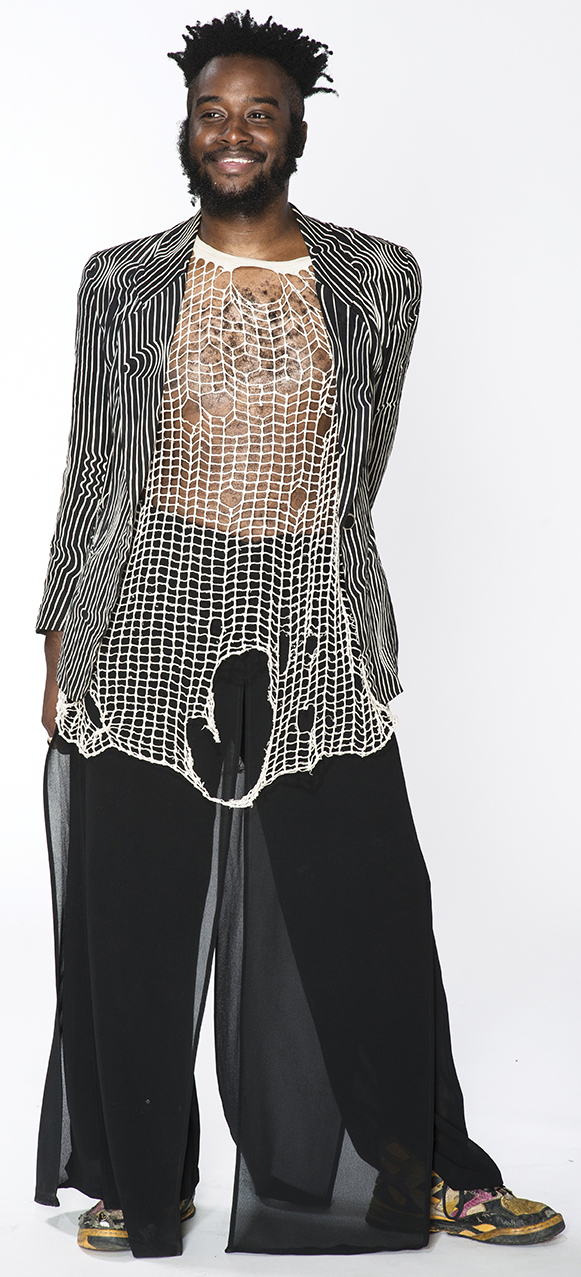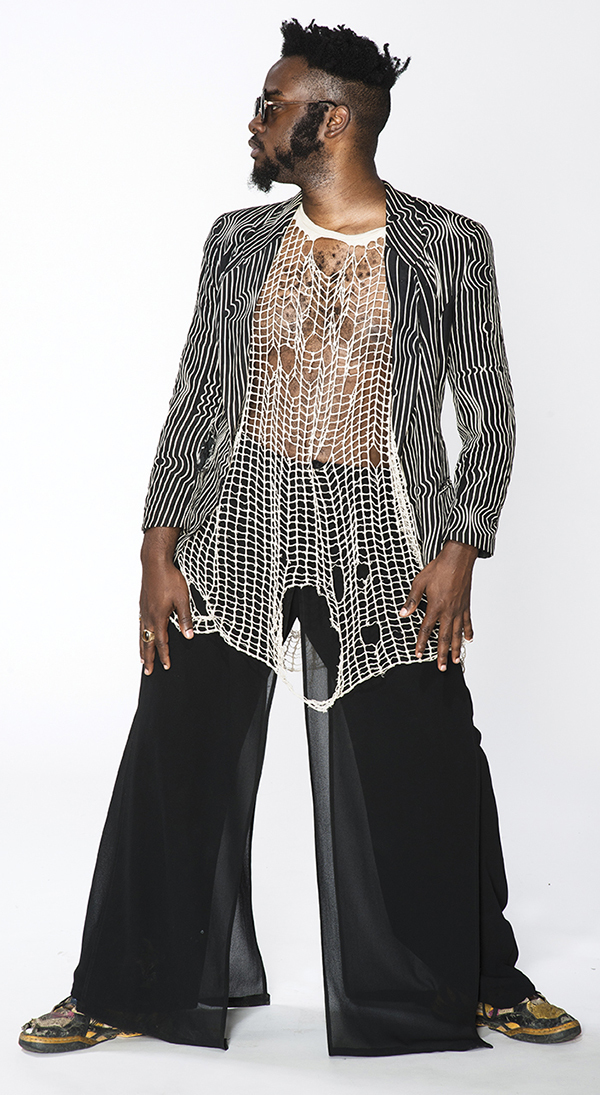Arts & Culture
Cameo: Abdu Ali
The Bmore Club artist discusses how 2016 is going to be his best year yet.

In a few short years, local rapper Abdu Ali has become an important fixture in the creative community of Baltimore. On the heels of a brand-new album and the anticipated rebirth of his Kahlon party, the young talent talks about his personal growth, positive message, and the future of our city’s arts scene.
You were just featured by Teen Vogue as one of the “coolest queers on the Internet.” Teen Vogue! How did you hear the news?
It was early in the morning. Somebody tweeted me and I didn’t believe it. The writer wrote about my—for lack of a better word—rants, or monologues, on social media and I realized, ‘Whoa, people are really paying attention.’
It’s especially awesome because there’s so much stuff out there now.
It’s really exciting. 2016 has been the year of me getting over a hump, coming into myself, and self-actualizing both my music and my identity—being queer, and black, and from Baltimore. Because of those pieces of my identity, I face a lot of challenges, especially in the music industry, especially rapping, which is such a heteronormative scene.
Being from Baltimore creates challenges, because for a long time, people in other cities like New York or D.C. ignored the Baltimore music scene, so we had to work so hard to give the city national weight. There are also the challenges of just being a creative in this city, trying to combat these archaic, deep-rooted institutions where older writers, editors, gallery owners, academic leaders don’t want to move forward and let young people, black people, women come through and do their thing. We’re working with so many challenges being from Baltimore, but Baltimore has so much potential, it has so much talent. We see who we could be.
What are some of the things that you’d like to see done?
For a long time, the media wasn’t really giving us platforms, which is so important, not just for artists but also for the community to be introduced to new voices and ideas. It creates progress and gets Baltimore out of that old, dry environment. We also need more support from city government, and not just for straight white artists but more marginalized creatives, like they do at The Contemporary with the GritFund. The city needs to realize it already has a good thing going [with the DIY scene]—something that makes the city beautiful—and they should put more money towards those things than tourism.
A number of local musicians have mentioned that the lack of venues is a major issue.
Space is very limited, but since I started touring, I realized that’s not just a Baltimore issue—it’s national, it’s happening all over, with gentrification. We need more venues like The Crown, and collectives like Balti Gurls, and events like Kahlon. One of the constant struggles is how do we get bigger audiences? How do we get new people to come out? Because at this point, it’s just a bunch of artists supporting artists.
As a leader of the local music scene, from your perspective, is the arts community as close-knit as it seems to be?
There’s starting to be a web—the Freddie Gray unrest definitely helped ignite some creative solidarity. It created a lot of sparks and inspiration for people to come together and be more active. It was a significant landmark in Baltimore history that catapulted impossible change. Baltimore will never be the same because of it. We saw so many positive things happening during that time, but there’s still a lot more work that needs to be done.
I think the mainstream has success, but the alternative and underground needs help. The visual arts scene is severely lacking in cultivators, a missing piece that could help create a kind of artistic renaissance in Baltimore. They need more than just Bmore Art. This is a big city. There are 600,000 people here, and that’s not including Towson or the county or surrounding areas. There are definitely a lot of people we can attract. And black artists specifically are still not getting the audiences they deserve. It shouldn’t be hard to get people to come out on a Saturday for a $5 show. It’s kind of crazy how hard it is.
That’s interesting, given that Kahlon, your bi-monthly DIY party at The Crown, always had a line out the door. What was it about that show that inspired such turnout?
We put in the work to put that party in people’s faces. We put flyers at MICA, Morgan, Towson, and had this massive email list. These days, people are just using the internet, which might work in New York City, but in Baltimore, you still have to be visible—and physical. We put ourselves out there not just in URL, but IRL. We had to prove that Kahlon was something that people should be a part of. We had to make it more than just a show; we had to make it an experience, where people felt welcome, and like they were witnessing something different and new and exciting.
Kahlon did a great job at pulling different walks of life together in Baltimore, thanks to its genre-crossing lineups.
I just started making music three-and-a-half years ago and I would go to shows and be the only black, queer, or young person, and I thought, this is too separate. Why not put something together where everyone can go? Inclusivity is the most important thing that made Kahlon different, but we shouldn’t have been the first.
You recently ended Kahlon, but it’s returning as a festival.
November 5 at Bambou. We’re working on a lineup now, with a lot of local artists and more national acts. The Crown was getting too tight. We want to bring it from 200 people to 500 or 1,000. And if this one’s successful, we’ll do more.
And you also recently had tours with the likes of Lower Dens and :3ION.
Those tours made me realize, this is working. That’s why I say 2016 is the year of self-actualization. I’m realizing that what I’m doing is bigger than me. I’m realizing that I am creating representation and inspiration for people like me. I want to go out there and empower and speak positivity for black people and queer people, and women and trans people, and any other identities that cross or intersect with mine.
Your new album, Mongo, carries a lot of those messages and is especially powerful.
I wanted to create something that was raw, real, inclusive, and accessible. On my previous projects, I was thinking too much—that I needed to be very different from everybody else, like I needed to be the future, that my music was a product. I wasn’t thinking about the bigger picture, and I realized that in doing so, a lot of my music wasn’t accessible in many ways.

I started thinking about how I go to art shows and some abstract artists don’t humble themselves when explaining their work. They’re not like, yeah, this is abstract but everybody can get it. They’re elitist, like if you don’t get it, it’s not meant for you. I don’t like that shit. I think art should be for everyone. Music is a universal language and it should be for all people. I think music can create an open dialogue for people to be able to dissect things like racism, misogyny, and transphobia and start to understand how they relate.
You call the album a “black self-care mixtape.” How does the process of creating music help or heal you?
It makes me feel like I exist—like my existence is important and valid. It makes me feel powerful. It brings me purpose. It does something for me that no money, clothes, or material things can do. It helps me survive. And that’s what I want to make people feel like, in Baltimore and beyond. Like, you do exist. Like, you fucking exist. This world is trying to tell people like me that we don’t, and I’ll do whatever little efforts I can to make people feel like living.
Like in your songs “I’m Alive” and “I, Exist.”
I’ve never told anybody this, but I’ve had suicidal thoughts, and that’s not something I should ignore or not talk about. We have anti-bullying campaigns but that’s not fully addressing the problem for those people who need it the most. People will say, well there’s Ru Paul, and there’s Caitlyn Jenner, with her own reality TV show, we are progressing—but just because you see people getting support doesn’t mean it’s easier for the other thousands of people out there. Transgender people still get murdered every day. So I want my music to inspire some queer black boy living in some city where not a lot of people look like him.
You want the music to do for them what it did for you.
You asked me if it helps me heal and it really does. Growing up, I always wanted to be an entertainer or performer, but my fears of being queer and black had me unsure if I really could. But then I just said, ‘Fuck it—let me try this thing out, and see where it takes me.’
It takes a lot of courage to do that.
It does, and while I try to motivate people, I’m not going push somebody who struggles to do so, because it’s hard. It’s hard to be yourself when you’re not a straight white male, because you get challenged at every step of the way for just being you. It’s hard to do things that people like you don’t tend to have the opportunity to do. But music makes me feel like I’m worthy of living, and that there’s love out there for me. When I say ‘I exist,’ I’m speaking to the audience, but I’m speaking to myself.
Even with all these hurdles to overcome in Baltimore—as a city, in the arts and culture community—what is the best thing about being an artist here?
The freedom to do whatever you want to do and not to have to limit yourself. We have an advantage in Baltimore to grow as much as possible within ourselves and for ourselves. In New York, there are a lot of rules. You have to adapt to what’s going on or you’ll be overlooked. But Baltimore is unruly.